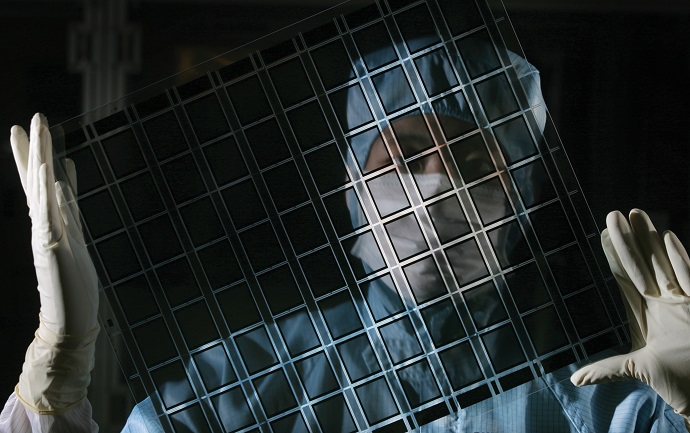January 21, 2015
Coherent, Ralph Delmdahl, www.coherent.com
A new generation of systems for excimer laser annealing is the basis for mass manufacturing fast and energy-saving backplanes which render mobile displays the high-resolution, all-rounders that have become a self-evident part of present-day reality.
Mobile displays have in just a few years revolutionized our information society and our communication behavior. Mobile internet access has become the basis of our communication culture. Now, in the era of digital media, users can directly access the collective knowledge of mankind – anytime and anywhere. The visual perception of digitized information content occurs primarily via digital mobile displays.
The current benchmark for mobile displays is a pixel density, at which it is impossible for the naked eye to see individual pixels. This is the case for pixel densities above and beyond 300 pixel per inch (ppi). The general trend towards increasing pixel densities can only be complied with shrinking dimensions of the pixels and their thin-film transistors (TFTs). The realization of the essential electronic circuits can be achieved only on the basis of highly conductive polysilicon layers usually applied on glass carriers. Crystalline switches are smaller than conventional switches made of amorphous silicon, i.e. they absorb less light and hence save energy by reducing the power consumption for backlighting.
The demand for polysilicon is driven by the rapidly increasing market penetration of high-resolution LCD and OLED displays and is met by the worldwide unique excimer laser annealing platform VYPER/LineBeam. It is able to generate the extremely thin crystal layer – 2,000 times thinner than a human hair – by the meter via selectively melting an amorphous silicon film. Thanks to the short UV wavelength of 308 nm and the short laser pulse duration of several nanoseconds, the energy of the laser light is concentrated on the silicon layer and is not directed to the heat-sensitive glass substrate below. VYPER/LineBeam technology currently represents the sole production potential for mass manufacturing of the crystalline key material being the salient feature in the high-resolution mobile displays of all manufacturers.
The since 2010 steeply rising demand for polysilicon layers was triggered by the trend towards increasing pixel densities. Multiplying the line beam length as well as the laser power became indispensable for large scale polysilicon panel manufacturing. VYPER/LineBeam technology enabled the scaling of the performance parameters required for annealing glass panels up to generation 8 in size. To this end, a time synchronization of the ultraviolet light pulses of two or more laser oscillators accurate to within 5 nanoseconds could be achieved through the development of the patented “EquiSwitch” technology.The multikilowatt VYPER laser thus created forms the basis for the optical line beam design managing more than one oscillator beam. It integrates, blends and homogenizes the entering excimer laser beams and projects the resulting line-shaped beam – now up to 1,300 mm long and thin as the stroke of a sharp pencil - onto the substrate.
The monthly throughput of a 308-nm VYPER/LineBeam system is immense and would cover several football pitches. Converted in 5 inch display equivalents this is a production of several million displays a month.
The market for polysilicon-based displays will continue to grow strongly over the next years. The demand for VYPER/Line Beam systems needed to fabricate the essential crystalline layers is currently driven primarily by the soaring smartphone segment. This impetus is reinforced by the steadily growing share of high-resolution mobile displays featuring pixel densities beyond 300 ppi. A trend which has since reached the larger tablet displays and which is poised to trigger the next wave of demand. As OLED displays fundamentally require crystalline backplanes even at low pixel densities, it is safe to assume a large polysilicon demand arising from the OLED-TV segment in the near future as well.












